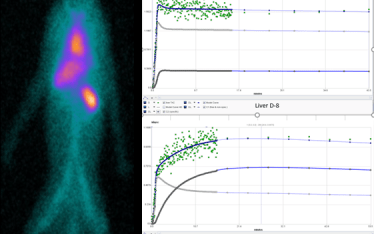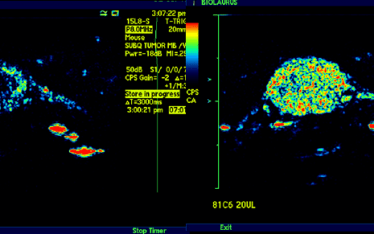
Cardiomyopathy is a significant clinical condition that is progressive and can be fatal. The development of new investigative therapeutics requires animal models that reproduce the disease. The standard cardiomyopathy model is the Doxorubicin (Dox) induced cardiomyopathy model in rats. While a number of analytic parameters have been investigated the information provided tends to be limited in sensitivity and does not measure cardiac function directly. Histopathology is a valuable tool but cannot measure myocardial function which starts to change before detectable histopathology.
Echocardiography provides an elegant means of measuring myocardium function in live animals and longitudinally (Migrino et al., 2008) (Merlet et al., 2013) (Henninger et al., 2015). Echocardiography heart beats along the long axis (LAX) of the heart and the short axis (SAX) are recorded and sophisticated speckle tracking software measure region changes in muscle motion in three directions, longitudinal, circumferential, and radial (EchoInsight, Epsilon Imaging). The rate of movement and direction of movement of each heart segment, the strain vector, can be measured and plotted. Since echocardiography is non-invasive it can be deployed in combination with analysis of biomarkers in plasma, as well as end-stage histopathology. This can be very important in correlating plasma biomarker changes and investigational drug PK with development of functional changes in the myocardium
BioLaurus at the request of a biotech client has made a significant improvement to the current Dox cardiomyopathy model. The standard model uses cumulative Dox doses that result in end-stage disease. This means that cardiomyopathy develops rapidly with typically half the test subjects dying at the testing stage. While this is clearly an end-stage model suitable for evaluating end-stage therapeutics it is not useful for the evaluation of disease progression and the therapeutics under development to treat earlier stage disease. To accomplish this a set of studies were done to “fine tune” a Dox delivery dose and schedule that over a 3 to 4-week period results in the gradual onset of cardiomyopathy. Since Dox cardiomyopathy effects are cumulative continued dosing leads to end-stage disease.


